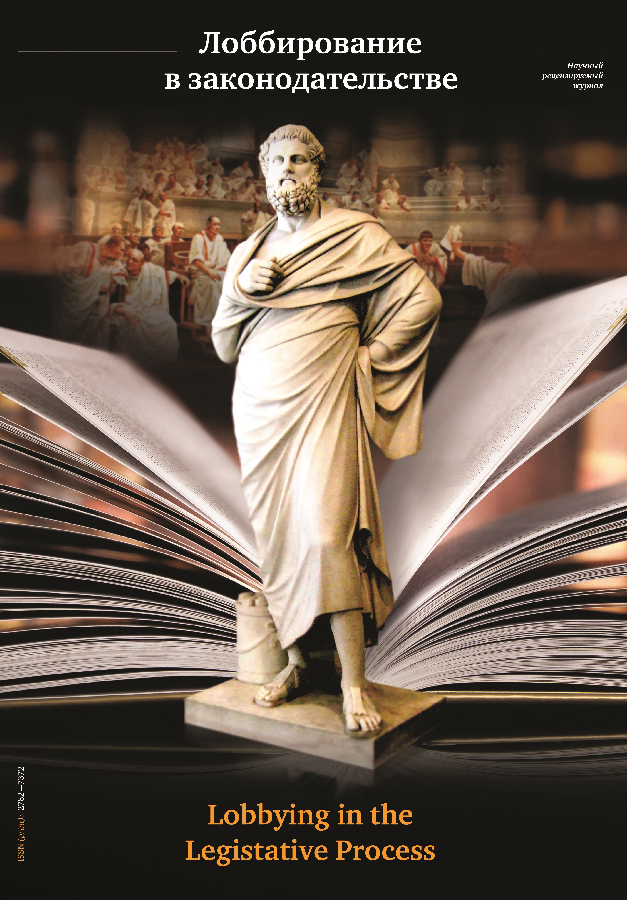Peculiarities of Criminal Liability for Intentional and Fictitious Bankruptcy
- 作者: Prostyakova D.P.1
-
隶属关系:
- Nizhny Novgorod Academy of the Ministry of Internal Affairs of Russia
- 期: 卷 2, 编号 3 (2023)
- 页面: 48-52
- 栏目: Criminal law
- URL: https://journals.eco-vector.com/2782-7372/article/view/624060
- EDN: https://elibrary.ru/UQCLZV
- ID: 624060
如何引用文章
详细
The purpose of the research. The article is devoted to the theoretical and criminal law consideration of deliberate and fictitious bankruptcy. The purpose of the study is to study and develop a conceptual apparatus of bankruptcy, to consider the various points of view of domestic scientists on this issue, as well as to determine the signs of the offenses provided for in arts. 196 and 197 of the Criminal Code of the Russian Federation and their differences in qualifications. Results. As a result of the study, a definition of the term “bankruptcy” was formulated on the basis of the studied scientific and legislative sources. We also came to the conclusion that there is some similarity between the two norms of the Criminal Law, which affects the subsequent erroneous or inaccurate qualification of acts in practice. For this, an analysis was made of the dispositions of arts. 196 and 197 of the Criminal Code of the Russian Federation, their signs and some elements of the crime. As a result, it is proposed to form recommendations on judicial practice in cases related to criminal bankruptcies in the form of Resolutions of the Plenum of the Supreme Court of the Russian Federation.
全文:
作者简介
Diana Prostyakova
Nizhny Novgorod Academy of the Ministry of Internal Affairs of Russia
编辑信件的主要联系方式.
Email: diana-03071999@mail.ru
adjunct
俄罗斯联邦, Nizhny Novgorod参考
- Bankruptcies in Russia: results of 2021. Statistical release of Fedresurs. Fedresurs. URL: https://fedresurs.ru/news/a57795a8-e1f1-4e2e-ba8b-da58725127e2 (data of accesses: 13.03.2023).
- Bankruptcies in Russia: results of 2022. Statistical release of Fedresurs. Fedresurs. URL: https://fedresurs.ru/news/d569ceb1-1f1a-44dd-bec2-e11c8eb5ddac?attempt=1 (data of accesses: 13.03.2023).
- Federal Law of October 26, 2002 No. 127-FZ “On Insolvency (Bankruptcy)”. Rossiyskaya Gazeta. 02.11.2002. No. 209–210. (In Rus.)
- Romanovsky M.V. Enterprise finance. St. Petersburg: Business Press Publishing House, 2016. 410 p.
- Sergeev L.I. Finance of branches and enterprises. Kaliningrad: Amber Tale, 2016. 350 p.
- Zaitsev N.L. Brief dictionary of the economist. St. Petersburg: Piter, 2008. 210 p.
- Izmalkova N.V. The essence and causes of the bankruptcy of an enterprise. Modern Sciense. 2019. No. 4-2. Pp. 121–124. (In Rus.)
- Insolvent business: how is the bankruptcy of legal entities. SberBusiness. URL: http://www.sberbank.ru/ru/s_m_business/pro_business/chto-takoe-bankrotstvo-yuridicheskih-lic-i-kakaya-procedura/ (data of accesses: 03.22.2023).
- Mamedova A.D. Bankruptcy of organizations and measures to prevent it. Nauka. 2017. No. 1 (3). Pp. 155–158. (In Rus.)
- Mukhin, I.N. Bankruptcy of enterprises and the system for assessing their solvency. Alley of Science. 2017. No. 16. Pp. 647–650. (In Rus.)
- Zemlyakova S.N., Kalyuzhnay, K.S. Bankruptcy and its causes. Best Scientific Article. 2019. No. 4. Pp. 146–149. (In Rus.)
- Criminal Code of the Russian Federation No. 63-FZ dated June 13, 1996. SZ RF. 1996. No. 25. Art. 2954.
- Shkodova S.N. Deliberate bankruptcy and its difference from fictitious bankruptcy. Synergy of Sciences. 2021. No. 63. Pp. 76–89. (In Rus.)









